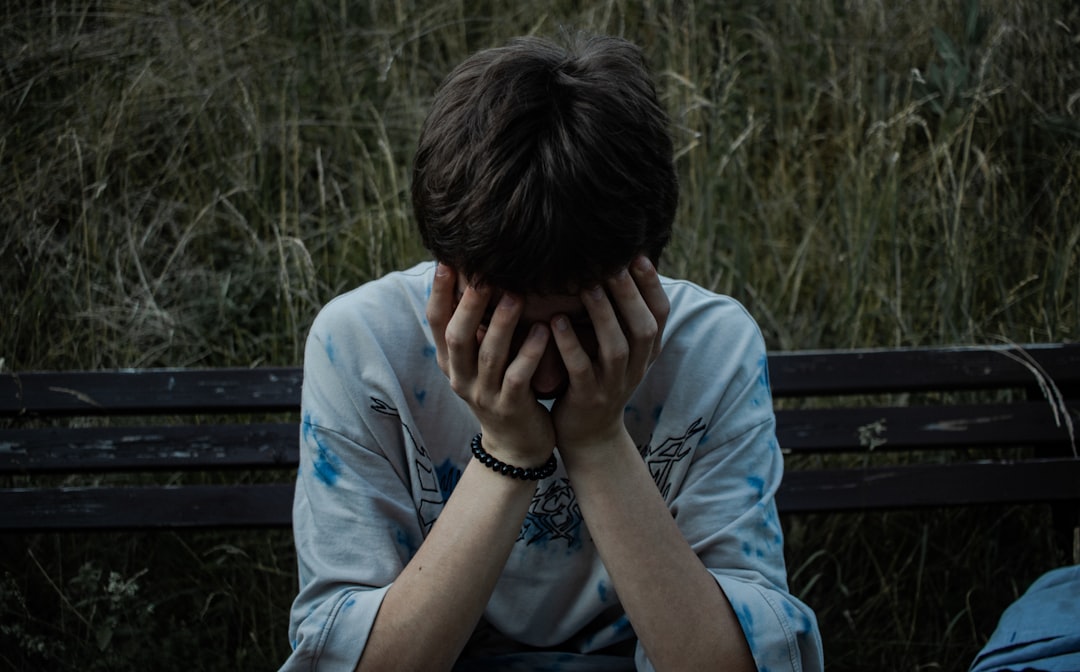Depression is a complex mental health disorder characterized by persistent feelings of sadness, hopelessness, and a lack of interest or pleasure in activities that were once enjoyable.
It is more than just a fleeting feeling of sadness; it can significantly impair an individual’s ability to function in daily life.
The World Health Organization (WHO) identifies depression as a leading cause of disability worldwide, affecting millions of people across various demographics.
It can manifest in different forms, including major depressive disorder, persistent depressive disorder (dysthymia), and seasonal affective disorder (SAD), each with its own unique features and treatment approaches. The impact of depression extends beyond the individual, affecting families, communities, and workplaces. It can lead to a range of emotional and physical problems, including fatigue, changes in appetite, and difficulty concentrating.
The stigma surrounding mental health issues often prevents individuals from seeking help, exacerbating their condition. Understanding depression is crucial for fostering empathy and support for those affected, as well as for developing effective treatment strategies that can lead to recovery. Check out the latest health tips and information at Lifemedicallab.
Key Takeaways
- Depression is a mood disorder that causes persistent feelings of sadness and loss of interest in activities.
- Symptoms of depression include feelings of hopelessness, changes in appetite or weight, and difficulty concentrating.
- Causes of depression can include genetics, brain chemistry, and life events such as trauma or loss.
- Anxiety is a normal response to stress, but anxiety disorders involve excessive fear or worry that can interfere with daily life.
- Common types of anxiety disorders include generalized anxiety disorder, panic disorder, and social anxiety disorder.
Symptoms and Signs of Depression
The symptoms of depression can vary widely among individuals, but they generally fall into emotional, cognitive, and physical categories. Emotionally, individuals may experience profound sadness, feelings of worthlessness or guilt, and a pervasive sense of hopelessness. These feelings can be so intense that they interfere with daily activities and relationships.
Cognitive symptoms may include difficulty concentrating, indecisiveness, and recurrent thoughts of death or suicide. These cognitive distortions can create a cycle of negative thinking that further entrenches the depressive state. Physical symptoms are also common in depression and can manifest as changes in sleep patterns, appetite fluctuations, and unexplained aches or pains.
Some individuals may sleep excessively while others may struggle with insomnia. Appetite changes can lead to significant weight loss or gain, further complicating the individual’s emotional state. Recognizing these symptoms is essential for early intervention and treatment, as many people may not realize that what they are experiencing is a clinical condition that requires professional help.
Causes of Depression

The causes of depression are multifaceted and can be attributed to a combination of genetic, biological, environmental, and psychological factors. Research indicates that individuals with a family history of depression are at a higher risk of developing the disorder themselves, suggesting a genetic predisposition. Neurotransmitters such as serotonin, norepinephrine, and dopamine play critical roles in mood regulation; imbalances in these chemicals can contribute to the onset of depression.
Environmental factors also play a significant role in the development of depression.
Traumatic life events such as the loss of a loved one, divorce, or financial difficulties can trigger depressive episodes.
Chronic stress from work or personal relationships can exacerbate feelings of helplessness and despair. Additionally, certain medical conditions—such as chronic illness or hormonal changes—can increase vulnerability to depression. Understanding these causes is vital for developing targeted interventions that address both the biological and environmental aspects of the disorder.
Understanding Anxiety
| Types of Anxiety | Symptoms | Treatment |
|---|---|---|
| Generalized Anxiety Disorder | Excessive worrying, restlessness, irritability | Therapy, medication, lifestyle changes |
| Panic Disorder | Panic attacks, sweating, trembling, chest pain | Cognitive-behavioral therapy, medication |
| Social Anxiety Disorder | Fear of social situations, blushing, sweating, trembling | Exposure therapy, medication, support groups |
Anxiety is a natural response to stress that can manifest as feelings of worry or fear about future events. While occasional anxiety is a normal part of life, chronic anxiety can become debilitating and interfere with daily functioning. Anxiety disorders are among the most common mental health conditions globally, affecting millions of people regardless of age or background.
These disorders encompass a range of conditions characterized by excessive fear or anxiety that is disproportionate to the actual threat posed by a situation. Anxiety can take many forms, from generalized anxiety disorder (GAD), which involves persistent worry about various aspects of life, to specific phobias that trigger intense fear in response to particular objects or situations. Understanding anxiety requires recognizing its complexity; it is not merely a heightened state of alertness but rather a condition that can lead to significant distress and impairment if left untreated.
The interplay between biological predispositions and environmental triggers often shapes the experience of anxiety for individuals.
Types of Anxiety Disorders
Anxiety disorders encompass several distinct types, each with unique characteristics and symptoms. Generalized Anxiety Disorder (GAD) is marked by excessive worry about various aspects of life, including health, finances, and relationships. Individuals with GAD often find it challenging to control their anxiety, leading to physical symptoms such as restlessness, fatigue, and muscle tension.
Panic Disorder is another type characterized by recurrent panic attacks—sudden episodes of intense fear accompanied by physical symptoms such as heart palpitations, shortness of breath, and dizziness. These attacks can occur unexpectedly or be triggered by specific situations, leading individuals to avoid places where they fear an attack might occur. Social Anxiety Disorder (SAD) involves an intense fear of social situations where one may be judged or scrutinized by others.
This fear can lead to avoidance behaviors that significantly impact social interactions and relationships. Specific Phobias are characterized by an irrational fear of specific objects or situations—such as heights or spiders—that leads to avoidance behavior. Each type of anxiety disorder presents unique challenges for those affected, necessitating tailored approaches to treatment and management.
Symptoms and Signs of Anxiety

The symptoms of anxiety can be both psychological and physical, often overlapping with those experienced in depression. Psychologically, individuals may experience excessive worry, restlessness, irritability, and difficulty concentrating. These cognitive symptoms can create a cycle where anxiety leads to impaired focus and decision-making abilities, further exacerbating feelings of distress.
Physically, anxiety can manifest through various symptoms such as increased heart rate, sweating, trembling, and gastrointestinal issues like nausea or diarrhea. Sleep disturbances are also common; individuals may struggle with insomnia or experience restless sleep due to racing thoughts. Recognizing these symptoms is crucial for early intervention; many people may not realize that their experiences are indicative of an anxiety disorder rather than just normal stress responses.
Understanding Bipolar Disorder
Bipolar disorder is a mental health condition characterized by extreme mood swings that include emotional highs (mania or hypomania) and lows (depression). These mood episodes can vary in duration and intensity; some individuals may experience rapid cycling between moods while others may have prolonged periods of stability interspersed with episodes. The disorder affects approximately 2.8% of adults in the United States alone, making it a significant public health concern.
Understanding bipolar disorder requires recognizing its complexity; it is not simply a matter of mood fluctuations but rather a serious condition that can disrupt an individual’s life significantly. The manic phase may involve elevated mood, increased energy levels, impulsivity, and risky behaviors—often leading to negative consequences in personal relationships or professional settings. Conversely, the depressive phase mirrors the symptoms associated with major depressive disorder, including feelings of hopelessness and loss of interest in activities.
Symptoms and Signs of Bipolar Disorder
The symptoms of bipolar disorder are categorized into manic/hypomanic episodes and depressive episodes. During manic episodes, individuals may exhibit heightened energy levels, euphoria, decreased need for sleep, racing thoughts, and impulsive decision-making. They may engage in activities that have high potential for negative consequences—such as excessive spending or risky sexual behavior—often without considering the repercussions.
In contrast, depressive episodes are characterized by feelings of sadness or emptiness, fatigue, difficulty concentrating, changes in appetite or sleep patterns, and thoughts of death or suicide. The transition between these two states can be abrupt or gradual; some individuals may experience mixed episodes where symptoms of both mania and depression occur simultaneously. Recognizing these signs is essential for timely diagnosis and treatment.
Causes of Bipolar Disorder
The etiology of bipolar disorder is complex and multifactorial. Genetic factors play a significant role; studies indicate that individuals with a family history of bipolar disorder are at an increased risk for developing the condition themselves. Neurobiological research has identified abnormalities in brain structure and function associated with mood regulation in individuals with bipolar disorder.
Environmental factors also contribute to the onset and course of bipolar disorder. Stressful life events—such as trauma or significant life changes—can trigger episodes in susceptible individuals. Additionally, substance abuse can exacerbate symptoms or lead to misdiagnosis due to overlapping features with other mental health conditions.
Understanding these causes is crucial for developing effective prevention strategies and treatment plans tailored to individual needs.
Treatment Options for Depression, Anxiety, and Bipolar Disorder
Treatment options for depression, anxiety disorders, and bipolar disorder vary based on the severity of symptoms and individual preferences but generally include psychotherapy, medication management, lifestyle changes, and support groups. Psychotherapy approaches such as cognitive-behavioral therapy (CBT) have proven effective in treating both depression and anxiety by helping individuals identify negative thought patterns and develop coping strategies. Medications such as antidepressants (SSRIs or SNRIs) are commonly prescribed for depression and anxiety disorders to help regulate neurotransmitter levels in the brain.
For bipolar disorder, mood stabilizers like lithium are often used to manage mood swings effectively. In some cases, antipsychotic medications may also be prescribed during manic episodes. Lifestyle changes—such as regular exercise, healthy eating habits, adequate sleep hygiene practices—can significantly enhance overall well-being and complement traditional treatment methods.
Support groups provide valuable opportunities for individuals to connect with others facing similar challenges; sharing experiences fosters understanding and reduces feelings of isolation.
How to Support Someone with Mental Health Issues
Supporting someone with mental health issues requires empathy, patience, and understanding. One crucial aspect is active listening; allowing them to express their feelings without judgment creates a safe space for open communication. It’s important to validate their experiences rather than dismissing their feelings as trivial or exaggerated.
Encouraging professional help is another vital component; gently suggesting therapy or counseling can provide them with access to necessary resources while respecting their autonomy in making decisions about their care. Offering practical support—such as accompanying them to appointments or helping with daily tasks—can alleviate some burdens they may be facing. Educating oneself about their specific condition fosters greater understanding and compassion; this knowledge equips supporters with tools to respond effectively during difficult moments.
Lastly, maintaining open lines of communication ensures that they feel supported throughout their journey toward recovery while reinforcing the importance of self-care for both the individual experiencing mental health challenges and their supporters alike.
If you are interested in learning more about mental health technician salary, you may also want to check out this article on the top programs for anxiety and depression available now. These programs can provide valuable resources and support for individuals struggling with these common mental health illnesses. Additionally, for those looking for intensive outpatient programs (IOP) for mental health, this article provides information on what to expect and how to find the right program for your needs. Click here to read more about these related topics.
FAQs
What are mental health illnesses?
Mental health illnesses, also known as mental disorders, are conditions that affect a person’s thinking, feeling, behavior, or mood. These conditions can impact a person’s ability to function in their daily life.
What are some common mental health illnesses?
Some common mental health illnesses include anxiety disorders, depression, bipolar disorder, schizophrenia, and eating disorders. There are many other mental health illnesses that can affect individuals in different ways.
What are the symptoms of mental health illnesses?
Symptoms of mental health illnesses can vary depending on the specific disorder, but may include changes in mood, behavior, or thinking patterns. Other symptoms may include feelings of sadness, anxiety, or irritability, as well as changes in sleep or eating patterns.
What causes mental health illnesses?
Mental health illnesses can be caused by a combination of genetic, biological, environmental, and psychological factors. Trauma, stress, and a family history of mental illness can also contribute to the development of these conditions.
How are mental health illnesses treated?
Treatment for mental health illnesses may include therapy, medication, lifestyle changes, and support from mental health professionals. The specific treatment plan will depend on the individual’s diagnosis and needs.
Can mental health illnesses be prevented?
While it may not be possible to prevent all mental health illnesses, there are steps individuals can take to promote mental well-being, such as maintaining a healthy lifestyle, seeking support when needed, and managing stress effectively. Early intervention and treatment can also help prevent the worsening of symptoms.

